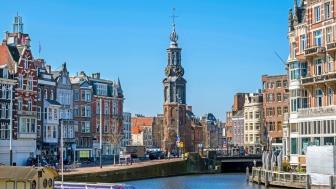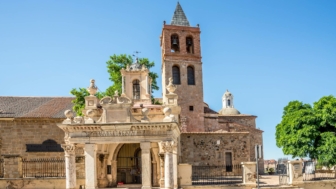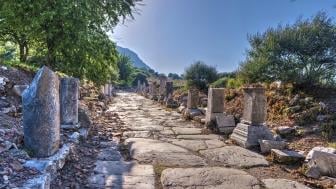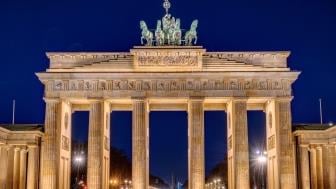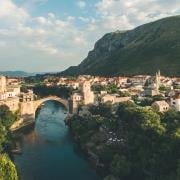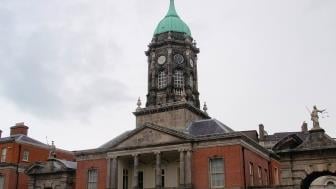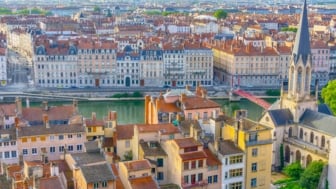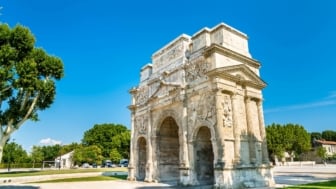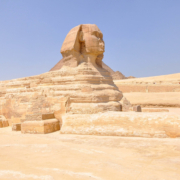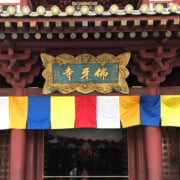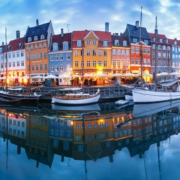Strolling through the National Archaeological Museum of Madrid city (known as MAN) is a journey through the history of Spain since prehistoric times. In this blog post, we offer a brief summary of 10 selected items you cannot miss on a visit to this museum, the most extensive archaeological collection in Spain.
1. Watcher Out of Time: the Eye Idol
Dating back around 3000BC during the Copper Age, the so-called Eye Idol stands for a human figure, depicted in a schematic style that surprisingly looks so modern: just a few lines on the alabaster efficiently depict the eyebrows, the zigzagging hair falling down the back, the huge eyes and, below them, intriguing lines that may represent tattoos or face paint. Initially placed in a dolmen as part of a funerary trousseau, the captivating wide-open sun-shaped eyes reveal that although it looks somehow human, he is not of this world.
2. Phoenician Art: the Priest of Cadiz
Skilled traders and great navigators, Phoenicians found settlements along the Mediterranean coasts to create an overseas commercial empire. They reached the western end of the sea and founded 1100BC the current city of Cadiz, which is supposed to be the oldest city still inhabited in Western Europe! This friendly guy with a golden mask found in that city on the Atlantic Coast in the South is one of the most beautiful samples of the presence of the Phoenicians in Ancient Spain.
3. Tartessus Enigma: Belt from Aliseda
This belt is part of the grave goods of a couple, which according to the luxury of the pieces found, must have been wealthy people. It is the so-called “Hoard of Aliseda,” one of the many treasures dating back between 700-500 BC in Spain, belonging to the first autochthonous culture of the Iberian Peninsula, “Tartessus.” Influenced by the oriental charm brought by Phoenicians, local cultures generated a unique civilization whose history is still shrouded in myth, comparable to that of Atlantis: an idyllic land at the end of the world, ruled by a monarchy enriched by the mining and agricultural resources of a large area concentrated from the Gulf of Cadiz to Extremadura. It was in the latter region that this gold treasure was found; the belt made with typical oriental goldsmith techniques, such as granulation and filigree, and full of Near East ornamental motifs stands out as a glimpse of that lost civilization.
4. A mighty woman of Iberia: the Lady of Baza
Ancient Greek called this Peninsula in Western Europe “Iberia,” so the native tribes living between the fall of Tartessus around 500 BC until the arrival of the Romans would be known as “Iberians.” Funerary art became prominent in this culture. This sculpture was indeed part of a tomb. Inside the statue were the cremated remains of a young woman who died in the first half of the 4th century BC; this limestone polychrome sculpture is a sort of monumental funerary urn. The naturalism of her facial features may be a portrait of a specific person, perhaps deified after her death; we don’t know! Sitting stately on her winged throne, the lady de Baza is still one of the many unsolved –and it fascinates us! – Mysteries of Iberian art.
5. The stunning Lady of Elche
This bust of the late 5th century BC has something special. Since its early and accidental discovery in 1897, the Lady of Elche has become the most iconic work of Iberian Art and one of the best samples of Ancient Art in Spain. Let us try to contemplate the work by mentally removing the complex headdress, the large necklaces, and the jewels. We will then have an idealized, serene female face that recalls the Greek sculpture of the time. The artist, if not Greek, was at least in contact with Hellenic workshops. But it is tough to stop admiring all the ornaments that dress the lady, which evokes Tartessian goldsmith and eastern art: this exotic contrast of seeing a kind of ancient Greek lady in an oriental outfit still amazes us.
6. Bulls on the wall: Costitx Bulls
The worship of the Bull was prevalent all over the Ancient Mediterranean. The Talayotic culture, a civilization of the Iron Age that arose on the islands of Menorca and Mallorca at the beginning of the first millennium BC, also seemed to praise this mighty animal, as these three technically perfect bronze bullheads show off. It is possible that they were figureheads of ships of another Mediterranean culture captured by Talayotic pirates, proudly displayed as a trophy in Mallorca. Does it have something to do? Well, in some traditional taverns in Spain, you may still see heads of dead bulls hanging on the walls as a trophy after the bullfight.
7. Labours of Hercules… in Spain
Natives of the Iberian Peninsula saw the expansion of Roman troops into their territory very early on. The Romans left many examples of their culture in Iberia, such as enormous mosaics. This one depicts the Labours of the superhero of the Antiquity, Hercules. It is interesting to remember that at least two of Hercules’ adventures take place in Hispanic lands: Geryon lived in Cadiz, near the Garden of the Hesperides, the westernmost in the world, that is, in the Iberian Peninsula.
8. The Crown and the Cross: Visigothic Hoard of Guarrazar
The Visigoths were the Germanic people who ruled the Peninsula after the fall of Rome until the arrival of the Arabs in 711. Converted to Catholicism at the end of the 6th century, their kings were fond of goldsmiths and precious stones. The Visigothic Monarchy and the Catholic Church thus united their destinies and mutually legitimized their power. King Recceswinth (649-672) donated to the Church of the then capital city of Toledo, as can be read in Latin on the letters hanging from the sumptuous crown: RECCESVINTHUS REX OFFERED.
9. Fine Arts of al-Andalus: Zamora Pyxis
This fine ivory box takes us back to the 10th century, to the courtly world of the caliphs of Cordoba, capital of al-Andalus, an Islamic kingdom in Europe where the arts and sciences flourished. Caliph Al-Hakam II, one of the most educated in the history of al-Andalus, commissioned the palace craftsman Durri al-Salir to make this beautiful cylindrical chest in elephant ivory and silver as a present for his favorite concubine Subh: all this information is known from the Arabic inscription that runs along the base of the lid! As accurate as this calligraphy are the reliefs of animal and plant motifs that decorate the box to evoke the paradise that the caliphs of Cordoba intended to recreate on Earth.
10. Unique medieval Spain: Crucifix of Ferdinand and Sancha
Ferdinand and Sancha, King and Queen of León, offered around 1063 this work to the recently founded basilica and the royal pantheon of San Isidore in the city of León. Made at the time of the Romanesque period, its outstanding quality reveals that it was possibly made in expert ivory workshops of al-Andalus, though. From there also came the remains recovered from the Muslims of a Visigoth saint, Isidore of Seville, as a pretext for founding the basilica in León. Here something characteristic and marvelous of the Hispanic Middle Ages takes place: the transfer of Muslim motifs and craftsmen to Christian territories.
There are many more fascinating objects in the MAN that will help you learn about Spain’s history and the different civilizations that have shaped it.
More info on the Clio Muse Tour.





















